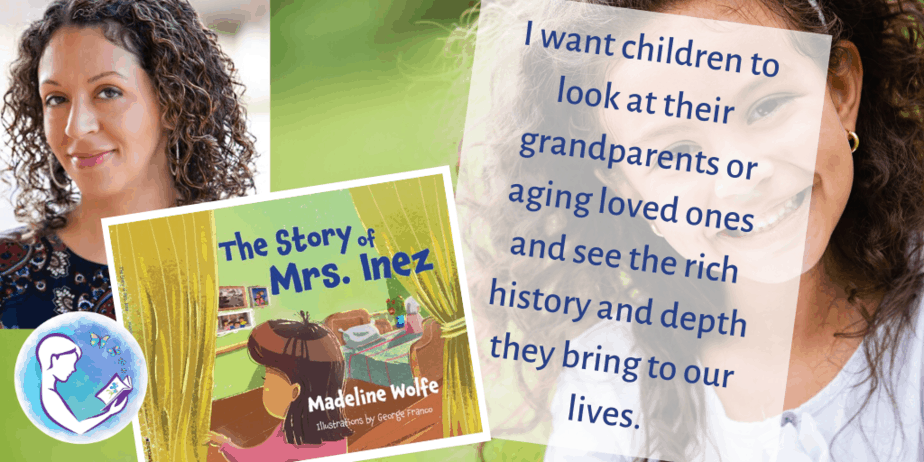The character of Mrs. Inez is loosely based on my grandmother’s former roommate, who I met at a nursing home around five years ago.
My sweet Granny had just moved in, and my family and I went to visit and help her get settled.
Just like in my book, when we first met Mrs. Inez (not her real name), she didn’t acknowledge us. She didn’t talk much either.
We were surprised to find out later that in years prior she had been known around the place as a firecracker. She had been quick-witted and slightly mischievous. She got her hair done each week, and her nails were always perfectly manicured. The nurses loved her and said she had been loud and spunky.
But I never got to see her like that. I witnessed someone who couldn’t remember the people in the photos on the wall and whose light was quickly fading.
Even though I had just met her, and would never really know her, it hurt.
This book is a tribute to her, my own late grandmother, and anyone else who can no longer tell their story.
Key topic:
I want to bring attention to people living with Alzheimer’s and dementia, but I also want to create a tool that bridges the generation gap. I want children to look at their grandparents or aging loved ones and see the rich history and depth they bring to our lives.
The Story of Mrs. Inez encourages young children to think beyond themselves and understand people who are different.
Publishing a book on a subject so close to my heart:
It took a long time to bring this book to fruition. I finally stopped sitting on the idea when my grandmother began to transcribe her story. I would write a little each time we visited, about her late husband, her life in rural Missouri and Oklahoma, and my mom and uncles.
It was an experience that made us closer and is one of my most cherished memories.
I realize I was fortunate my grandmother didn’t have Alzheimer’s, but she had begun to show signs of dementia. I’m happy I had the opportunity to write about her past and help her memory live on. I want everyone to have that same sense of urgency when it comes our family members.
When we lose them, it’s not just their presence that’s gone—they take history with them.
How do you think your writing can best help those living with Alzheimer’s and other dementias and also help end stigma?
My biggest hope is to highlight the opportunities to connect people in our community. I would love to see more storytelling programs like TimeSlips that increase the interaction between schools, groups, and families with those in care long-term care facilities.
These outreach programs have shown to enhance family connections and improve the relationship between caregivers and patients.
The Story of Mrs. Inez is a great way to make this less intimidating. It’s a conversation-starter that can help adults and children alike realize that someone with Alzheimer’s or dementia isn’t that different from them.
BIO 
Madeline is a former educator and a life-long learner. Along with learning about ways to make herself a better person, she is also passionate about finding ways to improve her community. She spent a great deal of time with her grandmother while she lived in a nursing home and made a point of visiting with the other residents. She volunteers with local organizations and teaches English to adults.
Between two jobs and an active little one, she finds time to write in the quiet moments.
She holds a M.S in Curriculum and Instruction and lives in Texas with her husband and young son. The Story of Mrs. Inez and the Spanish version, La historia de la Sra. Inés, is her first published children’s book.
Website: madelinewolfe.net
Facebook: @madelinewolfeauthor
Instagram: Madeline Wolfe – mj_wolfe
Twitter: @author_mjwolfe
Email: mjwolfe2@gmail.com



